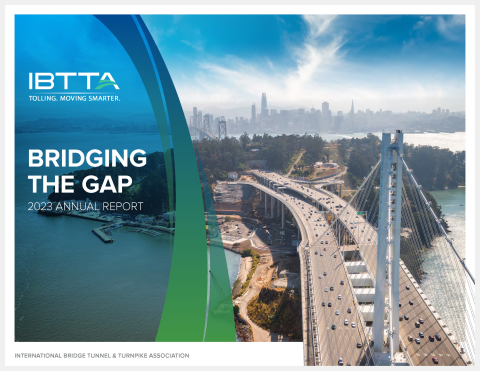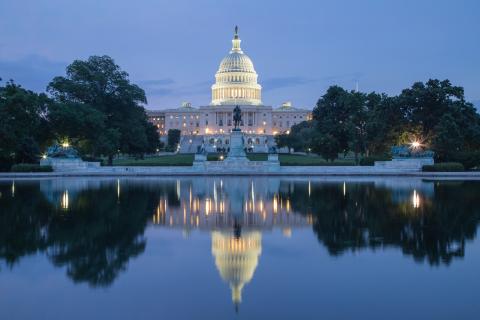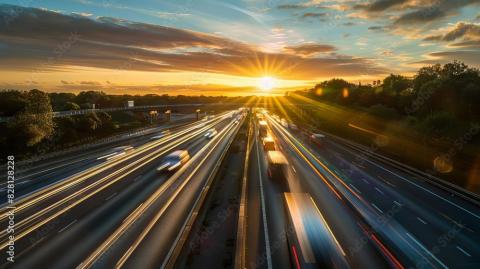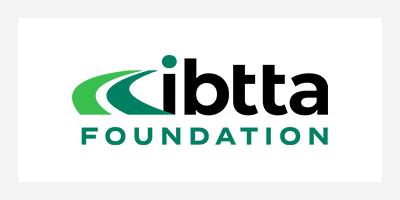- Home
- Tolling Has a Part In The Frank Talk About Transit
Stories
Tolling Has a Part in the Frank Talk About Transit


Over the last week, a couple of major cities in the United States have been having a frank conversation about the sorry state of public transit funding. The connections back to tolling range from the obvious, to the historical, to the metaphorical.
If you’ve been following the news, you know the story so far. On Wednesday, March 16, Washington, DC’s entire Metrorail system was shut down on just a few hours’ notice for a 29-hour emergency inspection marathon. In a rapid, system-wide repair sweep, crews found several damaged or deteriorated cables that would have brought subway service to an immediate halt if they’d been discovered in time.
Then a curious thing happened in San Francisco, when a social media manager with Bay Area Rapid Transit (BART) "started getting real" on the organization’s Twitter account, as reported by Vox's Libby Nelson.
Telling It Like It Is
After customers complained about a system failure on BART, “rather than a cheerful, anodyne apology for the delay and a promise to do better, they detailed the systemic problems afflicting mass transit in the Bay Area and elsewhere. They told their customers the truth: These issues aren't easy to fix, and Wednesday's delays are unlikely to be the last,” Nelson wrote.
“BART was built to transport far fewer people, and much of our system has reached the end of its useful life. This is our reality,” tweeted @SFBART. After a customer suggested the agency had 20 years to prepare for higher volumes, the social media manager responded: “Planners in 1996 had no way of predicting the tech boom—track redundancy, new tunnels & transbay tubes are decades-long projects.”
Then customer @lisabari hit the nail on the head, with her comment that “you can’t plan for growth in ridership combined with total lack of investment in infrastructure.” @SFBART later added that “we have 3 hours a night to do maintenance on a system built to serve 100k per week that now serves 430k per day,” and added a hashtag for the conversation: #ThisIsOurReality.
Honestly, someone needs to get these people involved in the conversation about highway infrastructure funding.
The System Our Transportation System Could Be
The Washington Post’s coverage of the Metrorail shutdown connects a failing subway system to the lack of investment in all forms of infrastructure—from the decline of public parks and fountains, to the shocking water contamination crisis in Flint, MI. “Demolition by neglect is now our maintenance policy, and not just when it comes to things we have made in bricks and mortar; it erodes our civic landscape, too,” notes the paper’s Pulitzer Prize-winning art and architecture critic, Philip Kennicott.
“Mid-century infrastructure is reaching the end of its useful life all across the nation,” he adds. “But much of that Great Society infrastructure was a response to an earlier infrastructure that was, by the 1950s, reaching the end of its life. And the response then was to say: Let’s rebuild it, and let’s make it as beautiful as we can.”
That philosophy took tangible form in a National Capital Transportation Agency that was mandated by President Dwight D. Eisenhower—remembered by tolling agencies as the father of the interstate highway system—to develop a rail system that was “worthy of the nation’s capital.” The words came from a U.S. Congress that supported the president’s vision. And they applied with equal fervor to Eisenhower’s other legacy transportation project—an interstate highway system, originally funded largely by tolls, now in desperate need of reconstruction as the gas tax that most recently supported it continues to erode.
#TollingRebuildsReality
It was a commendable, gutsy, and incredibly important move for @SFBART to reach out to the public with the message that #ThisIsOurReality. The other half of the story is that #TollingRebuildsReality.
(No, IBTTA isn’t launching a hashtag campaign…at least, not today. But hold that thought.)
On roads where tolling funds a reliable, predictable maintenance and operations budget, customers quite rightly expect a smoother, safer, more predictable ride. And their local toll agencies have the wherewithal to deliver on that expectation.
In a growing number of major metropolitan areas, toll revenue helps to cover transit operating costs, while some managed lanes provide free access for bus rapid transit. Some transportation managers call that revenue diversion. Others see it as a way to integrate 21st century transportation systems and funding for the greatest possible good.
“We integrate closely with bus rapid transit because we know customer choice is the name of the game,” wrote Javier Rodriguez, executive director of the Miami-Dade Expressway Authority, and IBTTA’s 2015 president in an op ed last year. “If transit disappeared tomorrow, we would have no capacity for the hundreds of thousands of commuters who would turn to their cars. And in a mature, well-established corridor, we would have nowhere to build new roads.”
Look no farther for evidence that tolling has a part to play, and a contribution to make, as our country’s frank conversation about transit, tolling and transportation plays out.
Meet the masters of the toll road management universe at IBTTA’s 2016 Maintenance and Roadway Operations Workshop, May 15-17, 2016 in Newport, RI. Register today.

Joining IBTTA connects you to a global community of transportation professionals, offering unmatched opportunities for networking, knowledge-sharing, and collaborative innovation in the tolling and transportation sector.
Follow IBTTA on social media for real-time updates on transportation trends and collaborative opportunities.





